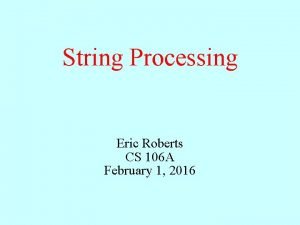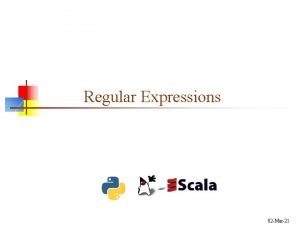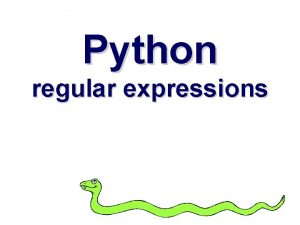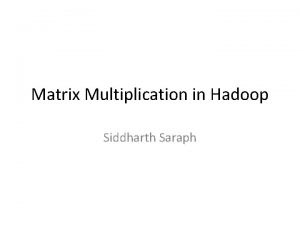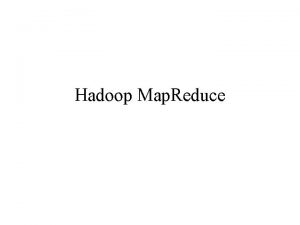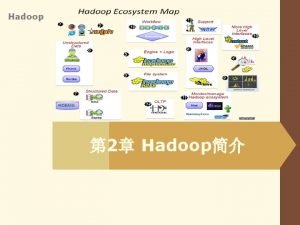Hadoop PIG PIG Why Dataparallel language Pig Latin













- Slides: 13

Hadoop – PIG

PIG – Why? • Data-parallel language (“Pig Latin”) • Relational data manipulation primitives • Imperative programming style • Plug in code to customize processing

PIG – Compare Fixed, one block not easy to run in parallel SQL Easy to program PIG small step easy to run in parallel Map Reduce PIG Difficult to program

PIG – Compare -2 (development)

PIG – Compare -3 (speed)

How to Run - PIG • Interactive shell • Script file • Embed in host language (e. g. , Java) • (coming : Graphical editor)

PIG – What is – Examples 1 • We have -- table urls: (url, category, pagerank) • SQL way: • SELECT category, AVG(pagerank) FROM urls WHERE pagerank > 0. 2 GROUP BY category HAVING COUNT(*) > 106 • PIG way: • • good_urls = FILTER urls BY pagerank > 0. 2; groups = GROUP good_urls BY category; big_groups = FILTER groups BY COUNT(good_urls)>106; output = FOREACH big_groups GENERATE category, AVG(good_urls. pagerank);

PIG – What is – Examples 2 • Topic: Detect faces in many images I = load ‘/mydata/images’ using Image. Parser() as (id, image); F = foreach I generate id, detect. Faces(image); -- User. Defined. Functions store F into ‘/mydata/faces’;

PIG – What is – Examples 3 • Topic: Find sessions that end with the “best” page

PIG – What is – Examples 3 cont.

PIG – What is – Examples 3 cont. Visits = load ‘/data/visits’ as (user, url, time); Visits = foreach Visits generate user, Canonicalize(url), time; Pages = load ‘/data/pages’ as (url, pagerank); VP = join Visits by url, Pages by url; User. Visits = group VP by user; Sessions = foreach User. Visits generate flatten(Find. Sessions(*)); Happy. Endings = filter Sessions by Best. Is. Last(*); store Happy. Endings into '/data/happy_endings';

PIG – Diff. Operators (key words) • operators: • FILTER • FOREACH … GENERATE • GROUP • binary operators: • JOIN • COGROUP • UNION For all details see http: //pig. apache. org/docs/r 0. 14. 0/basic. html

PIG – User Defined Functions (UDF) • Simple function -- myscript. pig REGISTER myudfs. jar; A = LOAD 'student_data' AS (name: chararray, age: int, gpa: float); B = FOREACH A GENERATE myudfs. UPPER(name); DUMP B; package myudfs; public class UPPER extends Eval. Func<String> { public String exec(Tuple input) throws IOException { if (input == null || input. size() == 0 || input. get(0) == null) return null; try{ String str = (String)input. get(0); return str. to. Upper. Case(); }catch(Exception e){ throw new IOException("Caught exception processing input row ", e); } } } MORE Information http: //pig. apache. org/docs/r 0. 14. 0/udf. html






